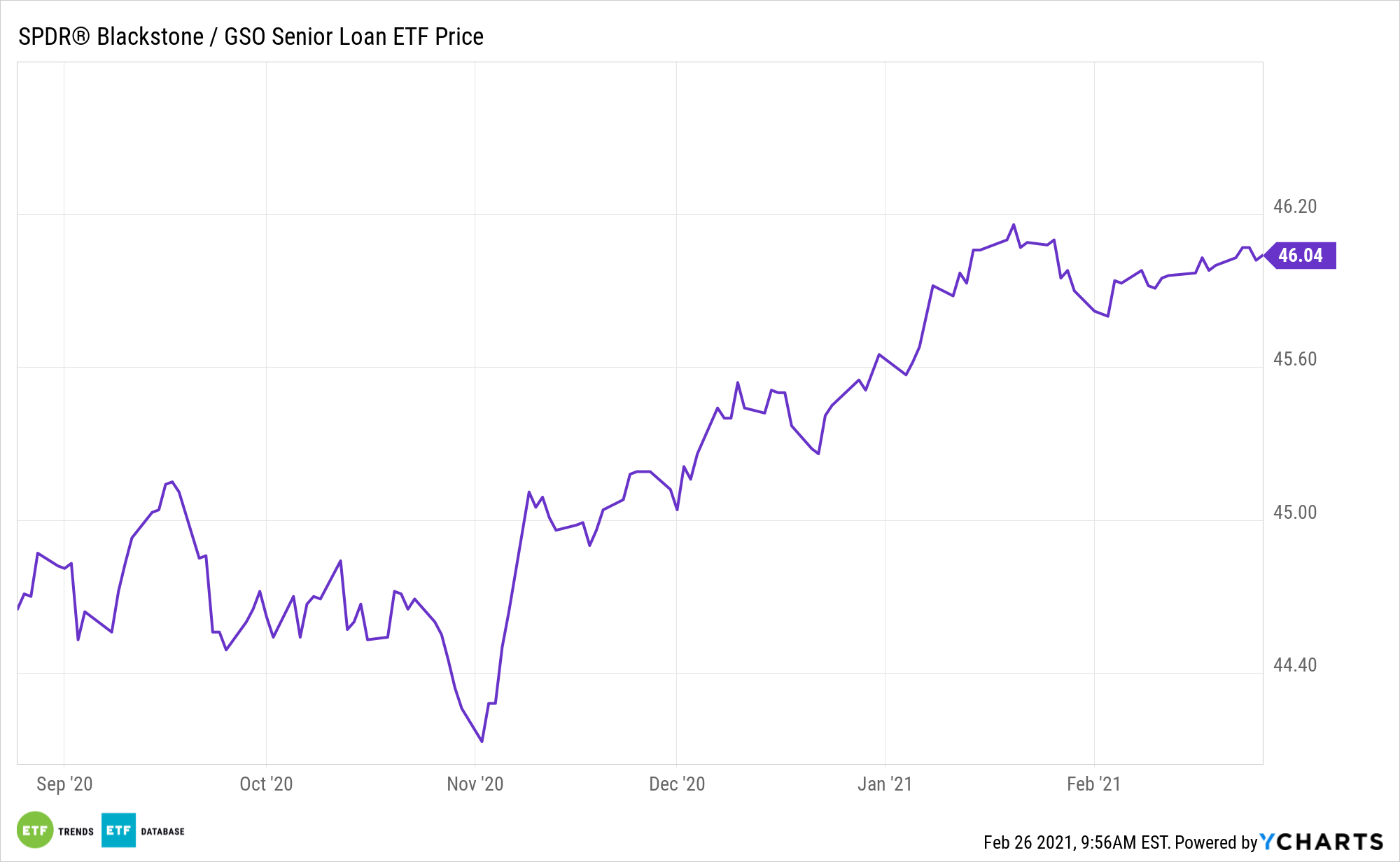Treasury yields are soaring at an alarming rate, but that’s not denting leveraged loan issuance, indicating the SPDR Blackstone/GSO Senior Loan ETF (NYSEArca: SRLN) is one fixed income exchange traded fund investors may want to consider over the near-term.
SRLN invests in senior loans given to businesses operating in North America and outside of North America. The Portfolio may invest in senior loans through the loans directly via the primary or secondary market or via participation in senior loans, which are contractual relationships with an existing lender in a loan facility where the loan portfolio purchases the right to receive principal and interest payments.
Since rates are usually reset once per quarter, senior loans typically have low durations – a measure of a bond fund’s sensitivity to changes in interest rates. The floating-rate component also offers investors an alternative method of earning yields while mitigating interest-rate risk. Consequently, bank loans are seen as an attractive substitute for traditional corporate debt in a rising rate environment.

SRLN: Right for Rising Rates?
“In terms of the year-over-year changes of moving three-month averages, the 10-year Treasury yield shows an inverse correlation of -0.3 with investment-grade bond issuance, a zero correlation with high-yield bond issuance, and a positive correlation of 0.41 with leveraged loan issuance,” according to Moody’s Investors Service. “All else the same, as Treasury bond yields rise, IG corporate bond offerings tend to decline, HY bond issuance fails to move in either direction, while leveraged loan issuance grow.”
The senior loans in SRLN’s portfolio are paid first. Higher payment priority assists liquidity in terms of the defaulting borrower having to sell assets in order to pay off creditors – in this case, senior loans within the SRLN portfolio are given higher priority – a viable option, especially during a market downturn.
“Typically, a rising trend for Treasury bond yields has been the offshoot of an improved outlook for business activity and corporate earnings,” adds Moody’s. “Also, HY corporate bond default rates tend to fall amid rising Treasury yields. For HY bond issuers, improved credit quality may offset higher benchmark bond yields and, thereby, leave HY bond offerings relatively unchanged. The high-yield borrowing that does occur in the context of rising Treasury bond yields may increasingly be directed to leveraged loans, as investors show a stronger preference for variable-rate debt whose interest payments will rise with any future increase in short-term benchmark interest rates.”
Leveraged loans usually attract investors who are looking to generate income in a rising interest rate environment due to their floating rate component. However, central banks and agencies like the International Monetary Fund have warned that credit quality is declining.
For more on active strategies, visit our Active ETF Channel.
The opinions and forecasts expressed herein are solely those of Tom Lydon, and may not actually come to pass. Information on this site should not be used or construed as an offer to sell, a solicitation of an offer to buy, or a recommendation for any product.








